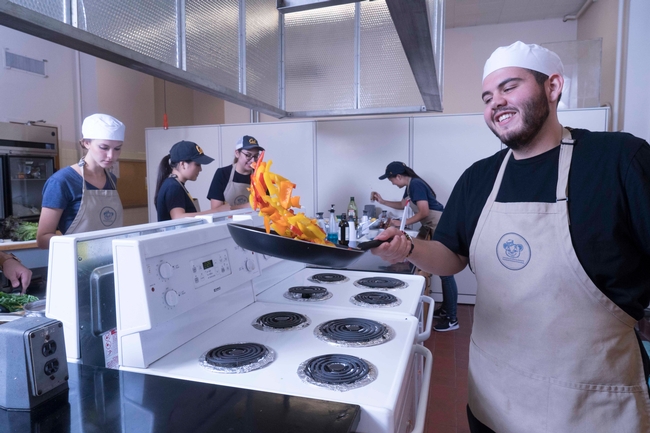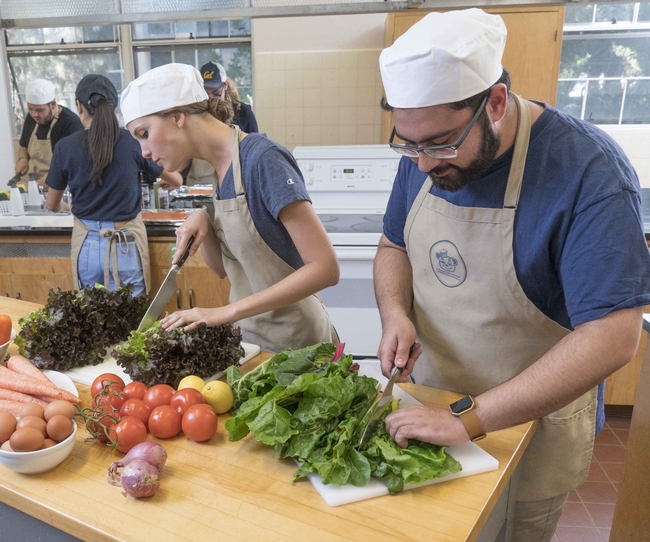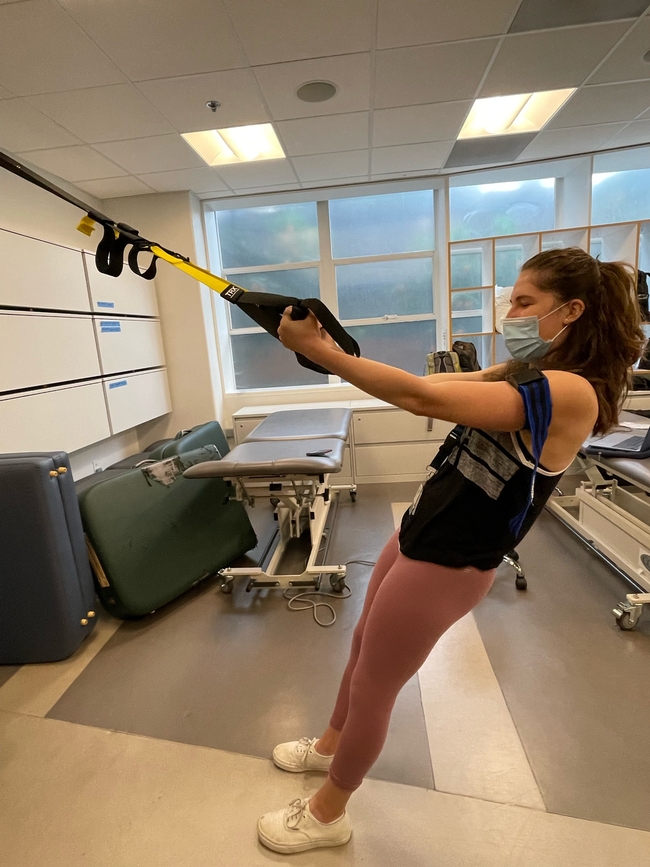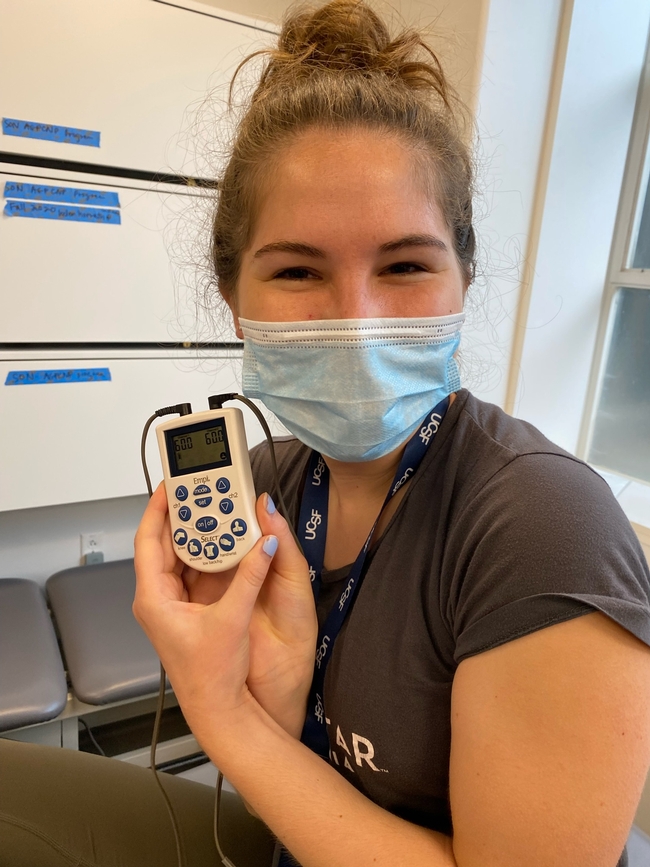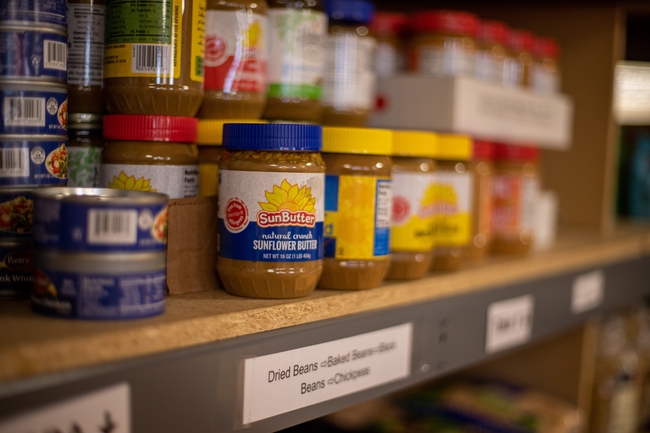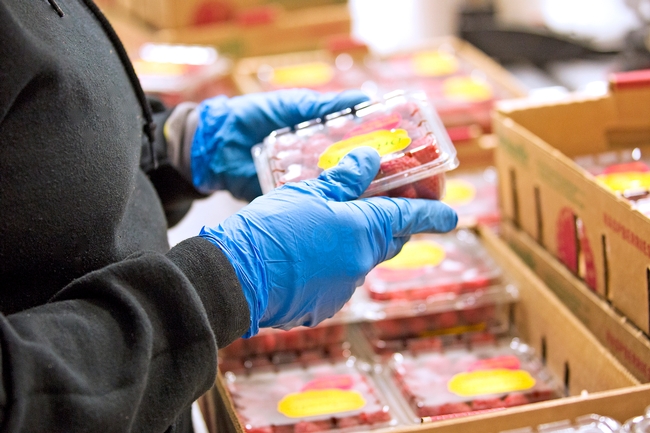Posts Tagged: food insecurity
Fewer than 10% of patients screened for food insecurity during pandemic
Study finds even fewer screened during virtual appointments
As jobless rates rose during the COVID-19 pandemic, millions more Americans experienced food insecurity because they lacked consistent access to food. National health organizations recommend primary care providers screen patients for food insecurity, since not having access to enough food can lead to chronic diseases.
But research from the University of California, Davis, finds that only 7% of primary care providers screened patients for food insecurity. If the appointment was virtual or telehealth, only 3% asked patients about their access to food. The American Journal of Preventive Medicine published the research.
“These rates are surprising and seem relatively small in comparison with what seems like a growing awareness of food insecurity during the pandemic,” said lead author Cassandra Nguyen, an assistant professor of Cooperative Extension in the UC Davis Department of Nutrition.
She said the findings may indicate that health care providers were prioritizing emergency responses to COVID-19. The research showed that once people had access to COVID-19 vaccines, screening for food insecurity increased to 10%.
Barriers to telehealth screenings
Screening for food insecurity at telehealth appointments remained low even after vaccines became available. Nguyen said that may suggest telehealth appointments have unique barriers.
“One of those barriers could be a concern about privacy and whether the patient is alone or feels comfortable discussing a potentially stigmatizing experience such as food insecurity. This may deter a primary care provider from asking about it,” Nguyen said.
Screening might also be more difficult if patients aren't familiar with the technology needed or if there are technological disruptions during telehealth appointments. Nguyen said more study is needed about potential barriers given the increased popularity of telehealth appointments since the pandemic.
The research examined electronic health records and clinic data from a national network of more than 400 community health centers in 16 states. It examined encounters between March 11, 2020, and Dec. 31, 2021. Screening typically involves a primary care provider asking the patient to answer that either or both of the following two statements is often true or sometimes true:
- Within the past 12 months we worried whether our food would run out before we got money to buy more.
- Within the past 12 months the food we bought just didn't last and we didn't have money to get more.
Co-authors include Rachel Gold with OCHIN Inc. and Kaiser Permanente Northwest Center for Health Research; Alaa Mohammad, Dedra Buchwald and Clemma Muller with Washington State University; Molly Krancari, Megan Hoopes and Suzanne Morrissey with OCHIN Inc.
The National Center for Advancing Translational Sciences of the National Institutes of Health, and the National Institute of Diabetes and Digestive and Kidney Diseases supported the research.
Teaching Kitchen course helps improve college students’ food security
Cooperative Extension researcher: Nutrition course a boon for UC Berkeley students
College students across the nation are struggling to meet their basic food needs. Within the University of California system of 280,000 students, 38% of undergraduate students and 20% of graduate students report food insecurity.
As part of the UC Global Food Initiative, in 2015 the Nutrition Policy Institute (a UC Agriculture and Natural Resources statewide research center) identified student food insecurity as a UC systemwide problem, prompting the UC Regents and campuses to collectively address the issue.
All 10 UC campuses now have on-site basic needs centers, providing food, emergency housing and support services. The UC system and campus working groups recognize that meeting basic needs, such as food, is a multidimensional challenge.
In response to the 2022 White House Conference on Hunger, Nutrition, and Health, which called for national efforts to reduce diet-related disease and food insecurity, UC renewed their commitment to cut the proportion of students facing food insecurity in half by 2030. Campuses will partner with local counties to maximize enrollment in the Supplemental Nutrition Assistance Program (also known as CalFresh in California), provide food for students who do not qualify for CalFresh, and allocate campus food resources to historically underserved student populations.
NPI's collaborative researchers continue to monitor the impact of these efforts, in addition to other interventions, such as supporting students in building basic culinary skills, to improve food security. One multipronged approach to address food insecurity at UC Berkeley is a 14-week course on Personal Food Security and Wellness with a Teaching Kitchen laboratory component.
Sarah Minkow, who teaches the Personal Food Security and Wellness course at UC Berkeley, shared that students learn about nutrition and gain culinary skills through the Cal Teaching Kitchen.
The curriculum is designed with consideration for the time, cost and convenience of healthy eating. Discussions include food safety, calculating nutrient needs, mindful eating and reading nutrition labels. The Teaching Kitchen laboratory brings the lessons to life through knife skills, “no-cook” cooking, microwave cooking and sheet pan meals.
Minkow enthusiastically highlighted her students' “overwhelmingly positive [response to the] lecture and lab,” suggesting the benefits of an interactive learning environment to garner student engagement.
“Students often give feedback that they wish this was a required course for all UC Berkeley students,” said Minkow. She noted one barrier to reaching more students: capacity of the Teaching Kitchen space.
Susana Matias, a Cooperative Extension specialist at the UC Berkeley Department of Nutritional Sciences and Toxicology and collaborative researcher with the NPI, evaluated the impact of the Personal Food Security and Wellness course at UC Berkeley.
Matias reported that increasing food literacy and culinary skills among students has shown to increase intake of fruits and vegetables, and frequency of cooking, and reduce the number of skipped meals. Her study on the impact of the 14-week nutrition course also found a significant decrease in student food insecurity.
Across the UC System, students are benefiting from their campus Teaching Kitchens, including UC Berkeley, UC Davis, UCLA and UC Riverside. Other campuses such as UC San Diego, UC San Francisco, UC Santa Cruz and UC Santa Barbara offer basic student cooking classes as well.
Katherine Lanca, UC Global Food Initiative fellow working with NPI, attended the 2022 Teaching Kitchen Research Conference as part of her fellowship to learn about the latest research on teaching kitchens supporting equitable health outcomes.
The conference was hosted at UCLA by Harvard T.H. Chan School of Public Health Department of Nutrition in association with the Teaching Kitchen Collaborative. Teaching kitchens are a promising approach to supporting food security and cultivating lifelong habits, especially among a college student population.
Food pantries, improved CalFresh processes alleviate food insecurity on UC campuses
Nutrition Policy Institute researchers contribute to studies that inform policy changes
Marcela Gonzalez, who had wanted to be a physical therapist since she was a teenager, was in the final stage of realizing her dream.
But when she started in the PT program at the University of California San Francisco in 2021, a vexing struggle of her undergraduate years came back. Academic pressures and stomach troubles, compounded by financial worries, drained her of any energy and capacity to feed herself.
“I didn't eat; I lost a lot of weight because I just couldn't eat,” Gonzalez recalled. “I was too stressed out all the time; I was a mess.”
During her first year at UCSF, Gonzalez, for whom food has “always just been hard,” discovered that she qualified for CalFresh (California's version of the Supplemental Nutrition Assistance Program, formerly known as “food stamps”). Her participation in the program – as well as the presence of a campus food pantry – helped lift a heavy mental burden and allowed her to refocus on school.
To understand the mechanisms that connect eligible students with CalFresh benefits, which could greatly improve their lives and education, University of California researchers interviewed UC campus staff responsible for guiding undergraduate and graduate students through the application process. Their recently published study, which involved researchers at UC Agriculture and Natural Resources' Nutrition Policy Institute, illuminated several major facilitators and barriers to CalFresh enrollment.
Campus-county coordination, boosting staffing key factors
Ensuring that college students have access to CalFresh is especially crucial, given that food insecurity affects that segment of the population roughly four times the rate of the general population, according to the study's principal investigator and co-author Suzanna Martinez, an associate professor in the department of epidemiology and biostatistics at UCSF.
It's estimated that more than 40% of college students face uncertain access to healthy food – and inflation, the rising cost of attending college and increasingly unaffordable housing are likely to swell those numbers.
That's why researchers say it's critical for campus staff who work on CalFresh outreach to collaborate with the financial aid office and the county office that administers the CalFresh program locally. Through close coordination, staff members can determine if students meet the necessary exemptions and help them with the paperwork.
“When that happens, it's much easier than when a student applies without their campus Basic Needs coordinator, or when they just go to the county and apply on their own,” Martinez explained. “Maybe they don't know all of the verification documents that have to be included, or they might not know their financial aid status.”
Erin Esaryk, NPI research data analyst and first author of the study published in the Journal of Nutrition Education and Behavior, also highlighted the need for increased campus staffing to help with CalFresh enrollment, as well as more outreach by campus and county staff to student populations about the benefits.
“When there's a lot of outreach, that helps alleviate some of the stigma, to normalize the receiving of CalFresh,” Esaryk said.
Helping others worry less about food
Given her own history of travails, Gonzalez, the physical therapy student, wanted to help others at UCSF “de-stress” about food. In summer and fall 2021, she served as a “CalFresh ambassador” for her cohort of new PT students, developing presentations and guides that break down how to apply for or renew CalFresh benefits.
She became the go-to person for her classmates' questions on the logistics and details of applying for the program, and also encouraged fellow health-professional students who, like herself, did not think they would qualify.
“To take out less loans, or to not worry about food a little bit every week, is a great thing,” said Gonzalez, pointing out that subtracting food costs allows students to shave down their loans.
After helping introduce her classmates to CalFresh, she transitioned to working at the food pantry at the Parnassus campus. In addition to setting up and distributing the items, Gonzalez also posts on Instagram and TikTok (@ucsf_basicneeds) to promote the “food market,” which attracts about 100 students and campus community members every Thursday afternoon.
“You never know what you're going to get, but there's so much really good, fresh produce,” she said.
Campus food pantries deliver health benefits
Researchers are also studying how campus food pantries affect students' overall health, including easing the challenges of anxiety, depression and sleep deprivation. Another recent study published in the Journal of Nutrition Education and Behavior analyzed health-survey responses of 1,855 undergraduate and graduate students at all 10 UC campuses – before and after access to a campus food pantry.
“What we found was that students reported improvements in their perceived health and sufficient sleep,” said UCSF's Martinez, the lead author. “We also found that they reported fewer depressive symptoms, compared to before having access to the food pantry.”
By 2019, all UC campuses had established food pantries, although nationwide only about 25% of four-year colleges have one. The significant health benefits reported by UC students in this study give researchers hope that campus food pantries will see additional governmental support, in California and beyond.
“It was important to evaluate whether the food pantries were actually making a difference…if you don't have numbers or evidence, then you're not going to get funded to support future programming,” Martinez said.
Research guides state policy changes
Studies of food insecurity in the college setting have already informed policymaking aimed at smoothing the application process for CalFresh – benefits regarded by Martinez as a better long-term solution than food pantries, which constitute an emergency “short-term response” to the problem.
One example of the research's impact is a law passed last year in California that requires community colleges and California State University campuses to designate a campus-county liaison who would help students procure social services, including CalFresh. A separate law expanded the list of training programs within which students would potentially qualify for CalFresh, and another bill currently under consideration by the state Legislature would make the processing of students' CalFresh applications more consistent from county to county, through more standardized training of staff.
Meanwhile, on the research front, Esaryk, Martinez and their colleagues are completing a follow-up study on students and CalFresh enrollment, this time looking at the perspectives of county staff. And while their broader goal remains clarifying and streamlining student eligibility rules and processes at all levels, they remain focused on students and meeting their needs.
“Right now, our main mission is just to try to increase awareness of CalFresh for students and to let them know they may be eligible,” Martinez said, “and then assist them through that application process so they can actually get the benefits.”
In addition to Esaryk and Martinez, NPI director Lorrene Ritchie and Laurel Moffat of Washington State University are also authors of the CalFresh/SNAP benefits study, while co-authors of the college food pantry study are Ritchie, Gwen Chodur of UC Davis, Sevan Kaladijian of UC Irvine and Michael Grandner of the University of Arizona.
Study: Government shutdown stressed food assistance program participants
A U.S. federal government shutdown can represent a minor inconvenience, a delay in paychecks, or – for people living in some of the most difficult circumstances – an extended period of hunger and anxiety.
A study published recently in the journal Nutrients provides a unique glimpse into the shutdown experiences of participants in CalFresh – California's name for the federally funded Supplemental Nutrition Assistance Program (formerly known as food stamps). Currently, about 42 million people participate in SNAP across the U.S.
In focus groups conducted in 2019 with 26 low-income CalFresh participants from four diverse California counties, participants shared how the 2018-19 federal government shutdown affected their SNAP benefits, their perception of the program and their faith in government.
One of the immediate effects of the 2018-19 shutdown was that February CalFresh benefits were distributed in January. And while that meant program participants saw extra benefits that month, they then had to wait 40 to 44 days until the March issuance – much longer than the usual 28 to 31 day cycle.
“What we saw with this study is that this extended lag in benefit receipt from January to March was devastating,” said Wendi Gosliner, senior researcher and policy advisor at the Nutrition Policy Institute of UC Agriculture and Natural Resources, and an author of the study funded by UC ANR.
She recalled one participant who, despite having a gastrointestinal issue that requires a special diet, had to eat canned food from the food bank that made her sick – rather than go hungry while waiting for her March benefits. Others described cascading financial challenges after using rent money for food in February, or going into debt to pay for food and getting behind on other expenses.
The study also chronicles the experiences of a woman who was anguished to hear the suffering of her daughter, also a CalFresh participant: “She called me several times crying, ‘Ma, I don't – we don't have enough food. What am I going to do…? You know, I can't afford to this and this and this.' And I can't help her.”
For individuals grappling with food insecurity, the stress of feeding their families was compounded by the uncertainties of the government shutdown. And while many participants exercised their agency and resourcefulness in coping with the situation, they also felt a degree of powerlessness amid the “confusion and craziness,” as one person put it.
“No one knew how long that shutdown was going to last; no one knew if the March benefits were going to be paid,” Gosliner said. “And as we learned, there were all kinds of stories circulating out there about what was going on with the uncertainty – a lot of people didn't have the information about what was actually happening.”
Some participants, seeing the “double benefit” in January 2019, thought that it was the last-ever distribution and that SNAP was ending. Others described being unable to get in touch with the CalFresh agency to get their questions answered about the benefits. Most participants had not heard about the disrupted benefit schedule before receiving the benefits. As a result, many people in the focus groups shared that their overall faith in government had been shaken.
Improving customer service, boosting benefit levels and adjusting eligibility and benefit formulas to reflect high cost-of-living and expenses related to working were three recommendations that came from the focus group participants.
A fourth recommendation tackles the shutdown issue head-on: Don't let it happen again.
“Congress should do absolutely everything in their power to be sure that the program operates on the usual time schedule – even if the government is shut down,” Gosliner said.
In the context of the global pandemic, when financial and social inequities and physical and mental health disparities have been laid bare, ensuring access to healthful food is even more important. And with studies showing that hospitalizations increase with longer lags between SNAP distributions, Gosliner said the “absolute last thing” the overburdened health system needs is more people in emergency departments seeking acute care.
“It's the worst time to be having people who need money to feed their families face additional insecurity,” she said. “It's critically important that Congress acts to be sure that there is not any disruption in benefits.”
The authors of the study, “Participants' Experiences of the 2018–2019 Government Shutdown and Subsequent Supplemental Nutrition Assistance Program (SNAP) Benefit Disruption Can Inform Future Policy,” are Wendi Gosliner, Wei-Ting Chen, Cathryn Johnson, Elsa Michelle Esparza, Natalie Price, Ken Hecht and Lorrene Ritchie.
The study can be found online at https://www.ncbi.nlm.nih.gov/pmc/articles/PMC7353319.
Food insecurity and childhood obesity: Is there a connection?
A well-nourished population requires that all members of society have access to sufficient amounts of nutritious food. Unfortunately, food insecurity continues to be a staggering problem throughout the world with negative consequences in terms of health and well-being.
In the United States, millions of households, an estimated 1 in 8 Americans, lack access to enough food. Children growing up in food insecure households face many challenges, such as behavioral problems, lower academic achievement, disrupted social interactions and poor health. The prevailing belief is that children living in a food insecure environment are at greater risk of undernutrition, not obesity. Although this may be true in some cases, food insecurity and childhood obesity also coexist.
Because childhood food insecurity may increase obesity risk later in life, it is important to better understand the relationship between food insecurity and children's obesity, and how it varies by demographic characteristics in the United States.
A recent study published in the September 2019 issue of The Journal of Nutrition assessed the relationship between household food insecurity and child adiposity-related outcomes. This included variables such as body mass index, waist circumference and diet outcomes. The study, conducted by Lauren Au, a researcher at UC Agriculture and Natural Resources' Nutrition Policy Institute, and colleagues examined associations by age, sex, and race/ethnicity. Data collected in 2013-2015 from 5,138 U.S. schoolchildren ages 4-15 years old from 130 communities in the cross-sectional Healthy Communities Study were analyzed.
Household food insecurity was self-reported using a two-item screening instrument and dietary intake was assessed using a food frequency questionnaire. Information on dietary behaviors, physical activity and demographics was collected. To assess adiposity, children's weight, height and waist circumference were measured.
Study results support an association between food-insecure households and measures of adiposity. Children from food-insecure households had high body mass index, waist circumference, greater odds of being classified as overweight or obese, consumed more sugar from sugar-sweetened beverages, and less frequently ate breakfast and dinner with family compared to children from food-secure households. When examined by age groups, significant relationships were observed only for older children, however, results did not differ according to sex or race/ethnicity.
These results suggest that household food insecurity is associated with higher child adiposity-related outcomes and several nutrition behaviors, particularly among older children. Clearly, further research is needed to better understand the complexities of food insecurity, childhood obesity, and future health outcomes.
Read the full open access article.
This research was supported by the National Heart, Lung, and Blood Institute, part of the National Institutes of Health.


